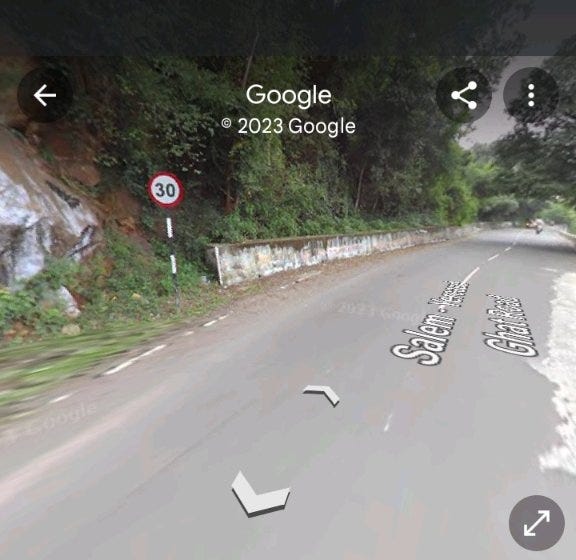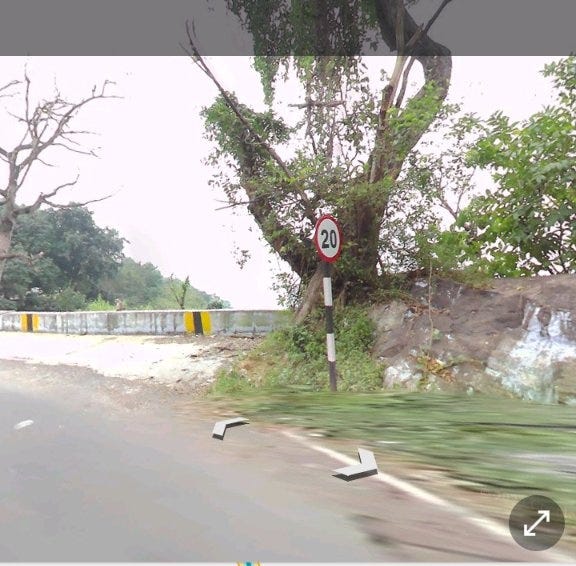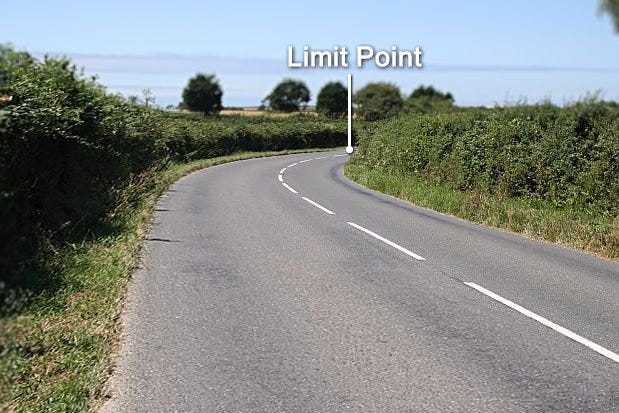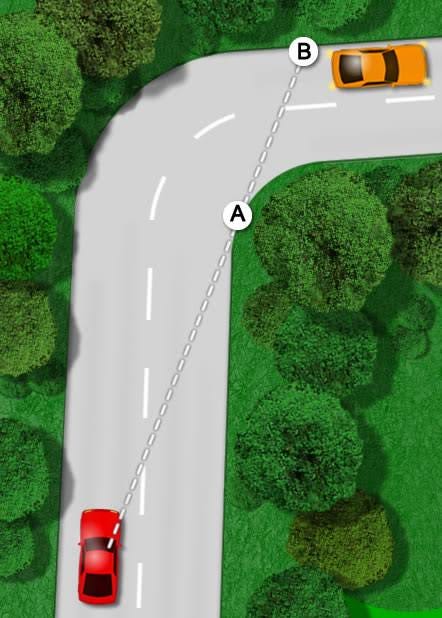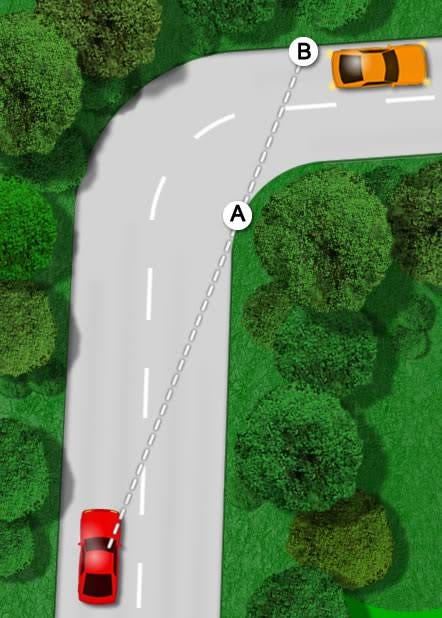When we are driving on curves,we must be careful as we need to handle the lateral centrifugal forces along with acceleration towards the front. Enter the curve,a little faster, we may need to brake to control understeer and veer into the opposite lane.
On unbanked curves, if speed exceeds beyond a limit, we can observe body roll which is uncomfortable to passengers, visibility inside the curve is less and with high speed,we may not have enough reaction time if there's a hazard.
How to pick the speed? Ideally, speed limits are posted before the curve entry points. If speed limits are not posted, we should drive at a speed that allows us to stop within the road we can see with our eyes.
The farthest point we can see on a curve is called the limit point. We should be able to stop within that point as we drive on the curve. We shouldn't enter the curve without visibility of what's ahead. What if there is a parked truck on the edge.
On a curve, there is no way of knowing what is beyond this limit point. There may be a cyclist, an animal, a broken down or parked vehicle – it can be anything.
As can be seen below, from the red car driver's view, point A and point B are combined to make a limit point. As can also be seen is the broken-down orange car that will only become visible to the driver of the red car as he gets closer to the bend.
The speed at which the red car is traveling will determine whether he will be able to stop in time if necessary, take emergency evasive action, or impact the rear-end of the orange car. If the red car driver follows the limit point rules,there's less risk.
How to use the limit point?
As you approach a curve,the radius of the curve determines how far you can see inside the curve.
1. Limit point stays static or moves closer.
It means,it's a deep curve or a hairpin bend and you need to reduce speed,until you can see what's behind.
In this example, we cannot see beyond the curve until we reach the curve entry point. If we approach it fast,we can hit the bus.
How to approach deep curves :
2. Limit Point moves away from you :
It means as you approach the curve,you can see what's behind the curve and you can accelerate as you exit the curve but within the speed limits to avoid moving to other lane. Here as we enter the curve,we can see more.
The same logic is applied for all intersections as we cannot see what's on the sides until we reach the junction point. That's why we must stop,look and proceed at intersections.
To conclude,do not enter curves fast, assuming you can brake later. There can be anything behind the curve inviting a disaster. Drive within the speed that allows you to stop before you see a hazard behind the curve.







